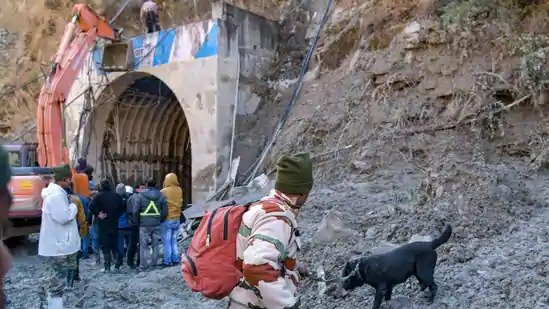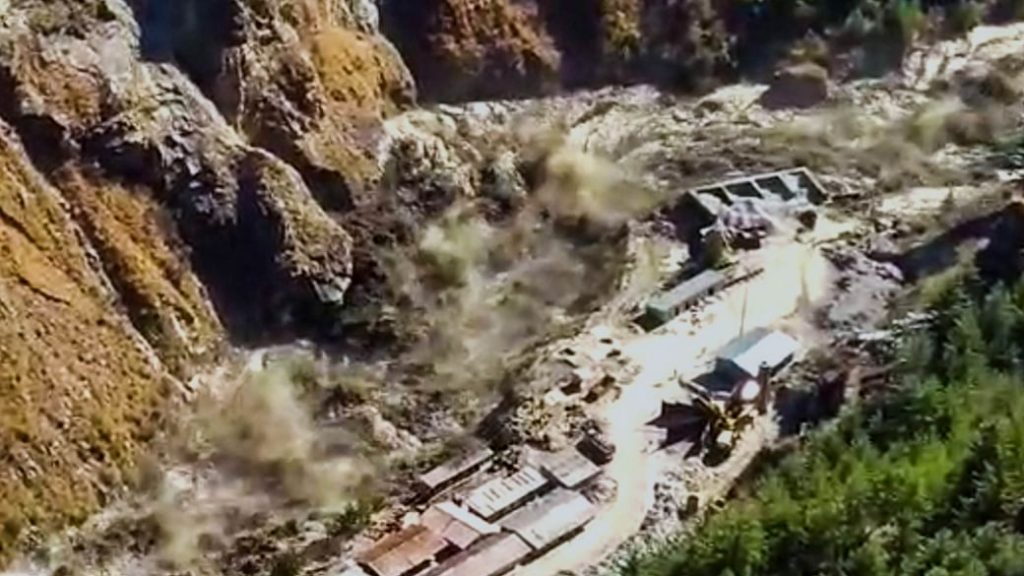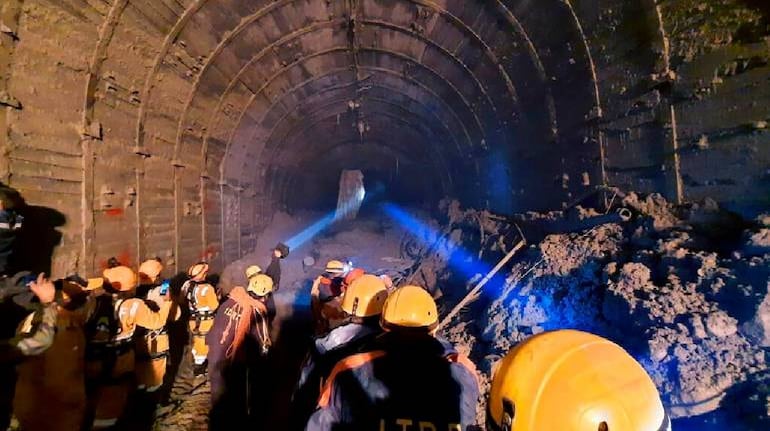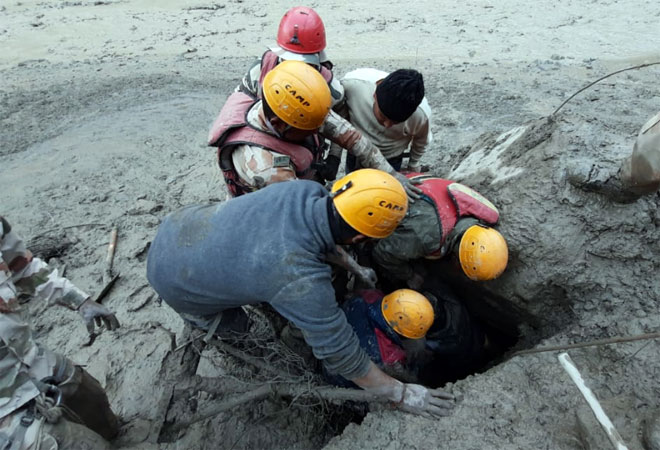
In India, nature holds a special place in the hearts of the people as a symbol of spirituality, culture, and life. The rivers and forests of India provide food, water and livelihood to millions of people across the country. India is a region that comprises more than 8% of the Earth’s biodiversity and the country’s natural beauty and wildlife are unparalleled, unique and endemic. But sometimes, human beings interrupt the process of nature for their desires or development, and knowingly or unknowingly contribute to destruction caused by this interruption. It can be said that when this interference of humans increases then nature happens to teach them a lesson. An example of this was the Uttarakhand flood incident of 16th June 2013 around Kedarnath. A similar event of flash flood occurred this year on the 7th of February 2021 in the Chamoli district of the state Uttarakhand.
In this disaster a flash flood not only destroyed several lives but also dismantled many structures. Initially, the cause of the incident was reported a sudden glacier burst in the media. But, the actual reasons of the tragedy are yet to be known. Rescue teams are still finding the missing people and also trying to identifying the dead bodies.
Devbhumi Uttarakhand
Uttarakhand is a state in the northern part of India. Earlier it was a part of Uttar Pradesh. But later in 2000, the government carved it out from the Uttar Pradesh. It was also formerly popular as Uttaranchal. This mountainous state is home to numerous Hindu temples and pilgrimage sites. Most of India’s sacred rivers have their origins in this state. Therefore, people usually referred to it as ‘Devbhumi- Land of the Gods’. Uttarakhand is also famous for its natural environment in Himalayas, Bhabar and Terai regions.
Incident of Flash Flood in Uttarakhand 2021
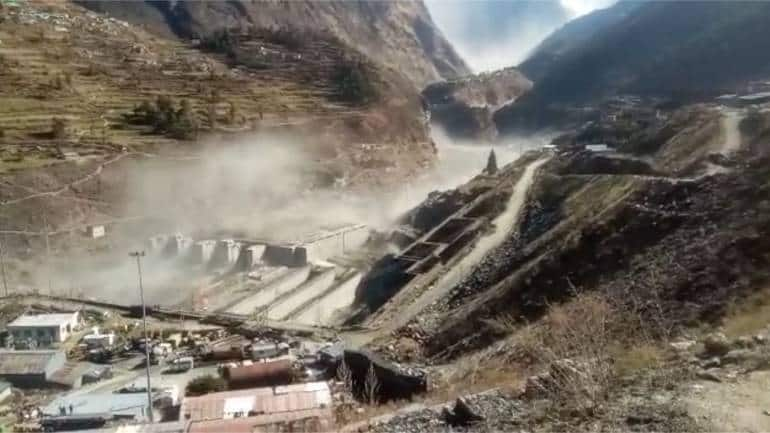
The normalcy of the day of 7th February couldn’t last much. There were more than thousands of workers engaged at construction sites when a flood stormed and disrupted their activities. The flood began in the environs of the Nanda Devi National Park, in the outer Garhwal Himalayas of Uttarakhand. Local residences had observed a landslide and an avalanche prior to the flood. Scientists have speculated that a glacial outburst of the Nanda Devi glacier caused landslide or avalanche. This resulted in heavy flooding in the Chamoli district. The water level rose most notably in the Rishiganga river, Dhauliganga river, and the Alaknanda, the major headstream of the Ganga. Officials have confirmed about 38 deaths and around 200 people are missing till 12th February 2021.
The Damage of the Flash Flood in Uttarakhand 2021
The Rishiganga power project on the Rishiganga river was ruined and 35 labourers working on this project went missing. The flood severely impacted the district of Chamoli. As a result of this, the Dhauliganga Dam at the confluence of the Rishiganga and Dhauliganga rivers was completely washed out. This flash flood also gravely impacted a much larger hydro project of the NTPC that has two tunnels. The Chief Minister of Uttarakhand, Trivendra Singh Rawat stated that around 176 labourers are trapped in these tunnels, as they are filled with debris brought along by the flood. According to a senior police officer of the state, a bridge in the Tapovan area that connects 13 villages was washed away by the floodwaters. The flood also impacted several other places including Joshimath, Rini, Nanda Devi National Park, and Saldhar.
Cause of the Destruction in Flash Flood of Uttarakhand 2021
The glaciologists observed an avalanche in the Nanda Devi range. They suggested a possibility that the cause of the flash flood is the glacial lake outburst and named it GLOF (Glacial Lake Outburst Flood). Though an avalanche is quite common in the area, but an avalanche on its own cannot increase the flow of water in the river. The glaciologists are also not aware of any big glacial lakes in the affected region. Therefore, the scientists are not sure what triggered the sudden surge of water that caused flash flood 2021 near Chamoli in Uttarakhand.
They are only speculating the causes. A glaciologist at the Hemwati Nandan Bahuguna Garhwal University in Srinagar, Uttarakhand said, “It is quite clear that somewhere in the upper region water level rose. That created pressure on the glacier’s lake and breached the boundaries of the lake. Then, water flowed downward at a very high speed and transformed into a flood. But what causes the increment in the water level is still unclear. The water has to come from a source, and as of now, we do not know what this source is.”
It might also be possible that a proglacial lake could have been hidden beneath a layer of ice that could not be identified from the satellite. Some experts have suggested that reduced snowfall this winter may have played a part in the disaster. Few scientists are also claiming that because of the climatic change, the glaciers in the Himalayas are retreating resulting in the outburst of glaciers. Some are also saying that there was a landslide before the disaster which triggered the incident.
Rescue Operations in Flash Flood 2021
The authorities emptied two dams farther down the river to stop the floodwaters from reaching the towns of Haridwar and Rishikesh. They also evacuated many villages to keep them safe from the destruction of the flood. Two C-130J Super Hercules aircraft with 3 teams of the National Disaster Response Force (NDRF) have immediately started the rescue operations after the disaster. Personnel of the Indo-Tibetan Border Police (ITBP), NDRF and Indian army are working to locate more than 200 missing people among which mostly are labourers that were working at two power projects. At NTPC’s Tapovan site, at least 39 people are estimated to be trapped in the debris. Rescue operations are centered on a 1,900-metre-long tunnel and rescuers have been attempting to force their way into the tunnel to rescue these workers.
The armed forces including State Disaster Response Fund (SDRF) and police are busy in vigorous efforts day and night in coordination to remove slush. Union Home Minister Amit Shah also stated in Rajya Sabha on the avalanche in Uttarakhand’s Chamoli district. He said that concerned agencies of the Centre and State are monitoring the situation. Chief Minister of the state Trivendra Singh Rawat conducted an aerial survey of the areas affected by the disaster. He also assured that government will give financial aid of 20 lakh rupees to the family of those killed in the incident.
What is Glacial Lake Outburst Flood (GLOF)?
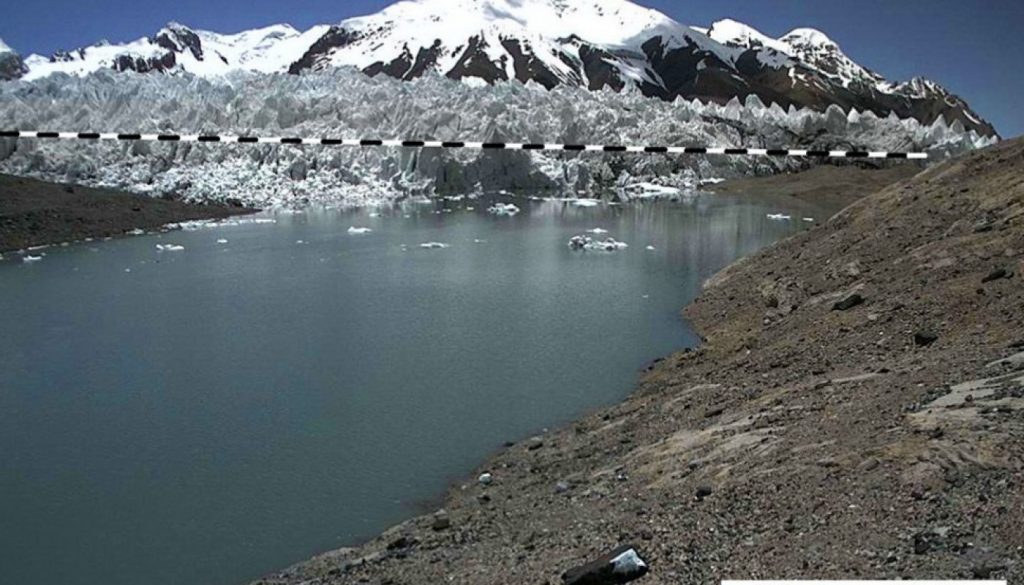
Glacial Lake Outburst Flood (GLOF) is a kind of outburst flood. Melting of glaciers caused the Glacial Lake Outburst Flood. At high altitude, the temperature usually is colder than the areas in low altitudes. In winters, when the temperature goes down, the high-altitude areas start freezing which forms glaciers. When the temperature increases, then these glaciers start to melt in the form of meltwater. Therefore, glaciers are the largest reservoir of freshwater. When a glacier or a moraine releases its dammed water, it results in GLOF.
Since 1850 scientists have discovered that due to global warming glaciers are retreating. The Himalayas have so many retreating glaciers. These retreating glaciers usually result in the formation of lakes at glaciers tips called proglacial lakes. When the proglacial lakes breach their boundaries, a large amount of water rushes down to nearby streams or rivers. The water flooding downstream carries sediments, rocks and other materials.
How Can The Risk be Reduced?
It is very essential to know about such proglacial lakes to prevent such incidents. The National Disaster Management Authority (NDMA) guidelines say that risk reduction has to begin with identifying and mapping such lakes. Scientists should know about the structure of these lakes so that they can prepare measures to prevent its sudden breach. Moreover, officials can also establish a better mechanism to save lives and property in times of such breaches. To identify such dangers we can opt some methods like field observations, records of past events, geomorphologic and geotechnical characteristics of the lake/dam and physical surroundings. NDMA also recommends few other methods like controlled breaching, pumping or siphoning out water to reduce the volume of water and to manage lakes structurally.
Himalayas: A Fragile Range

The Himalayas are folded mountain range that is located in South and East Asia. With a height of 8,848.86 meters, it separates Indian subcontinent from Tibetan plateaus. Most of the world’s highest mountains or mountain ranges lie in the Himalayas. The Himalayan range is one of the youngest mountain ranges on the planet and consists of sedimentary and metamorphic rocks. Its formation is the result of the collision of the Indo-Australian plate and the Eurasian plate. About 70 million years ago, the Indo-Australian plate broke up into two plates called Indian plate and Australian plate. The Indian plate is still moving horizontally towards the Tibetan Plateau which forces the Himalayas to continue to move upwards.
The Himalayas is a fragile range because it is still forming. Any disruption caused by humans may always result in natural disasters. The Himalayan range cannot bear disturbance in its ecosystem. Therefore, the construction of too many thermal plants, houses, buildings, etc. led to the ‘2013 disaster’ to occur again in the state.
Lessons We Should Learn from Natural Disasters
We have seen a lot of natural disasters in the last couple of decades across the globe and number of incidents such as earthquakes, floods, forest fires, cloudbursts is increasing with time. The frequent occurrence of such tragedies has a indirect link to climate change. Constant exploitation of natural resources at the cost of development has surely disturbed the ecosystem of the planet. Temperature of the earth is rising causing global warming.
We need to learn the lessons from these natural calamities. We need to advance the efforts for conservation of nature and opt for sustainable development. In the race to be first and most developed, we need to take care of our mother earth. We make developments by exploiting nature but when nature cries, it shattered all the developments within a few moments. Even a tiny organism of nature can lock down the entire human race as we have seen during the Corona pandemic last year.

